• The Tretyakov Gallery was founded by businessman, philanthropist and art collector Pavel Tretyakov in 1856. Over the next four decades he acquired 2000 prized works of national art before donating his gallery to the city of Moscow
• The Tretyakov Gallery continued to flourish in the Soviet period, and its collection increased greatly due to the requisition of private art collections. Hugely successful exhibitions were held throughout the Soviet era, even during the Second World War
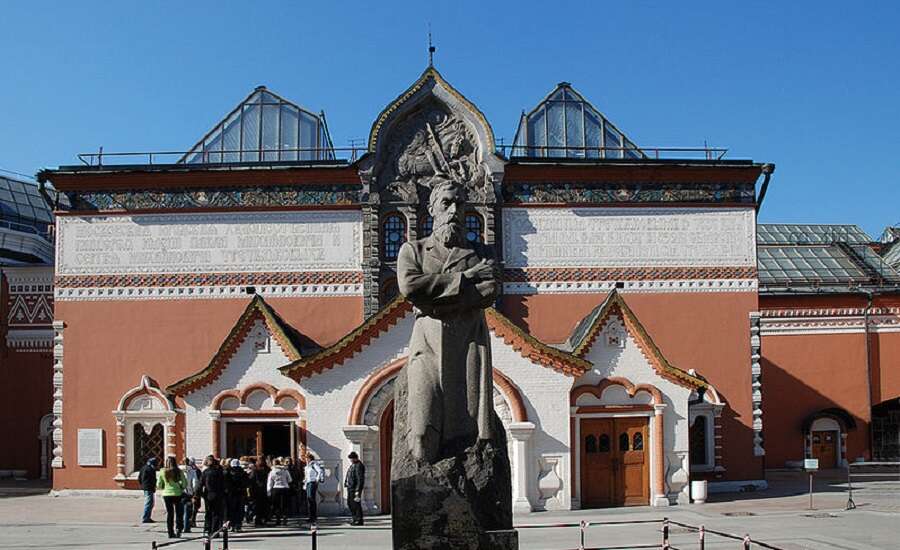
Photo by Andrey on Wikipedia
The Tretyakov Gallery in Moscow was founded by art collector and philanthropist Pavel Tretyakov in the mid-1850s. Today, it comprises over 190,000 works of Russian art from the 11th to 21st centuries, created by successive generations of artists who have made a great contribution to their national artistic heritage. Though not the largest national art museum in Russia (a title held by the Russian Museum in St Petersburg), the Tretyakov Gallery is considered to be one of the finest art galleries in the world - an absolute must on your Moscow tour.
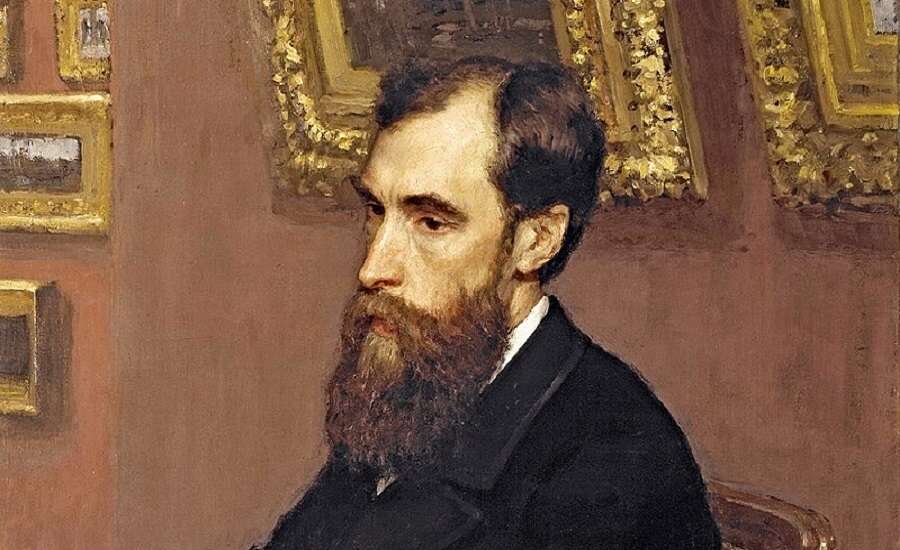
Photo by Илья Ефимович Репин on Wikipedia
Pavel Tretyakov’s ambition to become an art collector was allegedly inspired by a visit to the State Hermitage in St Petersburg in his youth. He belonged to a rich merchant family and lived in Zamoskvorechye, a merchant district south of the Moskva River, where he purchased a mansion on Lavrushinsky Lane in 1851. It is in this house that Pavel Tretyakov founded the Tretyakov Gallery in 1856, after acquiring the first Russian paintings for his collection - The Temptation by Nikolai Shilder and The Clash with Finnish Smugglers by Vasily Khudyakov (both of which are present in the gallery today).
Did you know? By his death in 1898, Pavel Tretyakov had acquired 2,000 paintings, drawings and sculptures by Russian artists.
Through his collection, Tretyakov created a comprehensive picture of Russian art, culture and society for posterity. Due to his respected societal position and wealth he was able to patronise emerging and established artists alike, acquire prized artwork, and move in prominent cultural circles, commissioning portraits of celebrities of the time and hosting eminent figures such as Ilya Repin, Ivan Turgenev, Ivan Kramskoy, and Pyotr Tchaikovsky at his house. Although his was a personal collection, Tretyakov intended it to become а gallery of national art open to all, saying in 1860 that ‘for me, а true and ardent lover of painting, there can be no finer wish than to found а universally accessible repository of the fine arts, which will benefit many and give pleasure to all.’
Did you know? Tretyakov occasionally purchased censored artwork, such as Ilya Repin’s Ivan the Terrible and His Son. Once news spread of the presence of a forbidden picture in the gallery, visitors flocked to see it. Repin’s painting of Ivan the Terrible did not cease to cause offence – it was vandalised by visitors to the Tretyakov Gallery in 1913 and 2018.
The young collector's desire was nobly put into practice in 1892. Following the death of his brother Sergei, who bequeathed to the city his own art collection and half of the mansion on Lavrushinsky Lane, Pavel Tretyakov donated the gallery to the city of Moscow. Tretyakov died on 4th December 1898, bestowing hundreds of thousands of roubles for future upkeep and acquisition of paintings for the gallery. Over the next couple of decades, the collection was professionally restored, catalogued, and arranged, to elevate the Tretyakov Gallery to the level of leading European museums.
Did you know? Tsar Alexander III offered Pavel Tretyakov a noble title for his service to Moscow, but he declined; instead, he was made an Honorary Citizen of Moscow in December 1896.
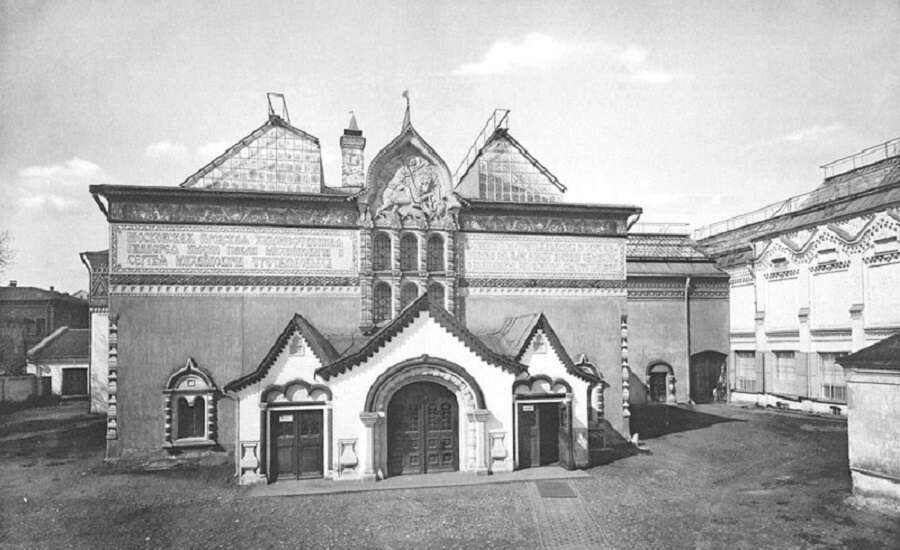
Photo by анонимный фотограф фототипии П. П. Павлова on Wikipedia
On 3rd June 1918, a decree was issued to nationalise the Tretyakov Gallery and transfer it to the People’s Commissariat of Education. Although many landmarks of imperial Russian culture were deemed at odds with Soviet ideology and fell into ruin, the Tretyakov Gallery continued to prosper. Exhibition space was expanded, scientific departments, library and archives of Tretyakov’s personal books and papers were established, and the gallery was fitted with electricity and heating.
Did you know? Even Vladimir Lenin recognised that the Tretyakov Gallery was a national treasure. He personally amended the 1918 decree to allow the gallery to retain the name of ‘Tretyakov’.
The Soviet National Museum Fund facilitated the nationalisation of all private art collections and their donation to state museums, which increased the Tretyakov Gallery’s collection by almost 50% in the years 1918-1922, and a number of Moscow’s other galleries and museums were absorbed into the Tretyakov Gallery (although all artwork by foreign artists was given away to foreign museums). During the first decade of Soviet rule, successful temporary exhibitions spanning diverse movements and artists were organised, yet the gallery’s activities became increasingly ideological under Stalin and its collection was even rearranged along socio-economic lines.
Did you know? In 1926 Aleksey Shushchev – architect of Lenin’s Mausoleum – was appointed Director of the Tretyakov Gallery.
Upon the outbreak of the Second World War, the Tretyakov Gallery’s collection was prepared for evacuation to Novosibirsk, where it was stored in the Novosibirsk Opera House alongside treasures from many other galleries and museums. This was a wise decision as the gallery suffered a number of direct hits from German bombers.
Did you know? Despite the ongoing war, cultural activities did not cease. 9 exhibitions were held in the Tretyakov Gallery during wartime, 20 exhibitions were organised from the evacuated collection in Novosibirsk (the first time that the work had been shown in Siberia), and staff from the gallery even gave lectures in train stations, military bases, hospitals, and schools in various Siberian cities.
The Tretyakov Gallery flourished in the post-war period, organising travelling exhibitions throughout the USSR and All-Union exhibitions showcasing the best of Soviet art. Extensive research was conducted in order to widen the scope of the gallery’s work, and notable exhibitions included the ancient icons of Andrey Rublev and the innovative artistic trends of the 1920s which were suppressed by Stalin. The gallery was closed between 1986 and 1995, during which time its collection was relocated to a newly-built exhibition space on the banks of the Moskva River – this later became the New Tretyakov Gallery.
• Tretyakov Gallery: The main gallery collection showcases Russian art from the 11th century to the beginning of the 20th century by Russia’s most eminent artists. It includes precious ancient icons, portraits, landscapes, historical and religious scenes, the work of influential groups such as the Peredvizhniki, and trends developing alongside political and social shifts in Russia
• New Tretyakov Gallery: The modern art branch of the Tretyakov Gallery is home to Russia’s most complete exhibition of national art from the 20th century to the present day. It includes masterpieces of Avant Garde art from the 1910s and 1920s, painting and sculpture spanning seven decades of Soviet rule, and unofficial art movements which emerged towards the end of the USSR
Masterpieces of Russian artwork ranging from the 11th to the early 20th centuries are displayed in the historic Tretyakov Gallery on Lavrushinsky Lane.
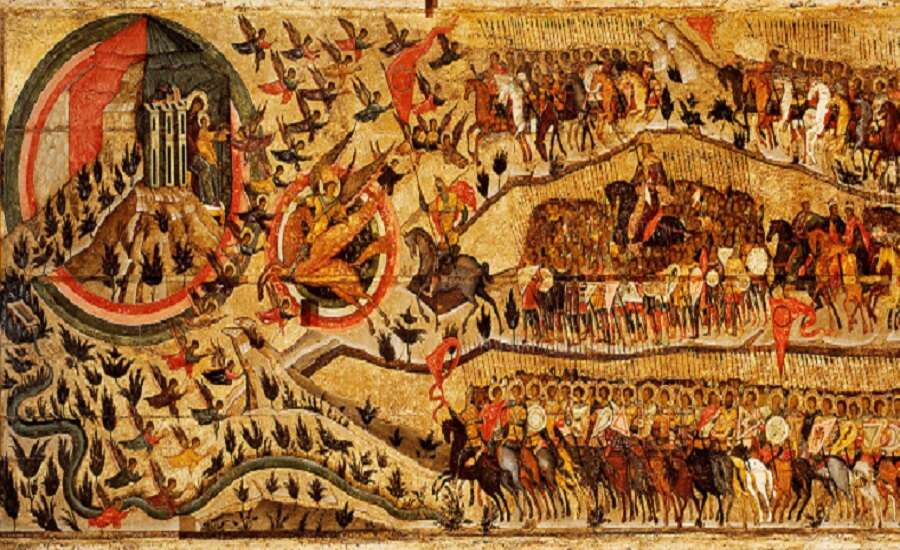
Photo by Athanasius on Wikipedia
7 halls showcase ancient Russian painting, sculpture and mosaic from the Pre-Mongol period of Russian history, from ancient Novgorod, Pskov, the Rostov-Suzdal and Tver Schools, and several hundred icons from the 12th-18th centuries including those by masters Simon Ushakov and Andrey Rublev (including his most famous work Trinity).
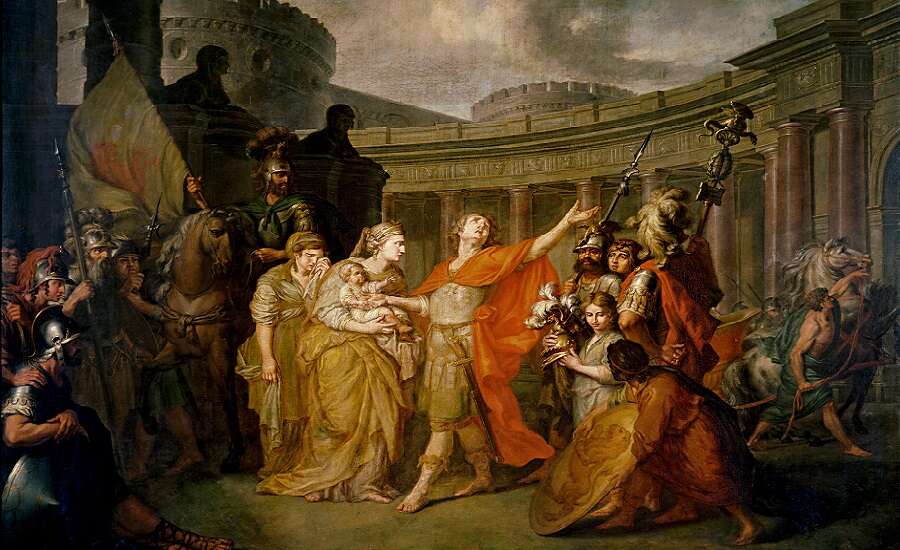
Photo by Антон Павлович Лосенко on Wikipedia
This section displays painting and sculpture of the 18th century over 7 exhibition halls. It includes sculptures by Ivan Martos and Fedot Shubin, cityscapes of St Petersburg and Moscow by Fyodor Alekseyev, rural landscapes by Semen Shchedrin, a great number of portraits by Fyodor Rokotov, Dmitry Levitsky, Vladimir Borovikovsky and Ivan Nikitin (founder of the Russian Portrait School), and historical scenes by Anton Losenko (one of the founders of the historical movement in Russian painting).
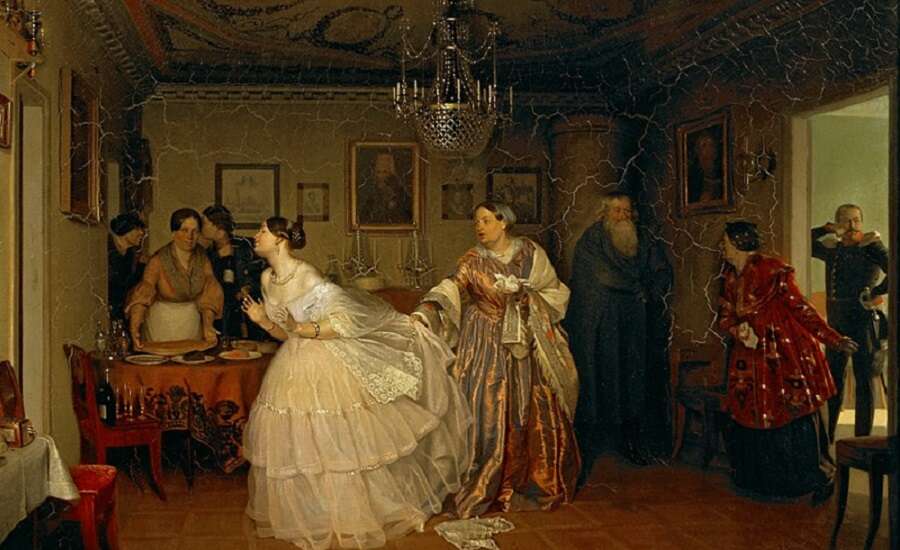
Photo by Павел Андреевич Федотов on Wikipedia
27 halls are dedicated to art of the 19th century. The first half of the 19th century is dominated by Romantic works, such as paintings by Karl Bryullov, landscapes by Sylvester Schedrin, Aleksey Venetsianov’s scenes of rural life, religious scenes by Alexander Ivanov (including his magnum opus The Appearance of Christ Before the People), portraits by Vasily Tropinin and Orest Kiprensky (such as his praised portrait of Pushkin).
Part of the exhibition of the second half of the 19th century is dedicated to the Realist work of the acclaimed Peredvizhniki (The Wanderers), including Vasily Perov, Ivan Kramskoy, Ilya Repin, Vasily Surikov, Isaak Levitan and Ivan Shishkin; the landscapes of the latter two artists are said to embody Russian nationality. Other works present are two of Konstantin Flavitsky’s most famous paintings (Princess Tarakanova and Christian Martyrs in the Colosseum), landscapes by Aleksey Savrasov and Fyodor Vasilyev, marine scenes by Ivan Aivazovsky, war scenes by Vasily Vereshchagin, and folkloric paintings by Viktor Vasnetsov (designer of the emblematic Russian-style façade of the Tretyakov Gallery).
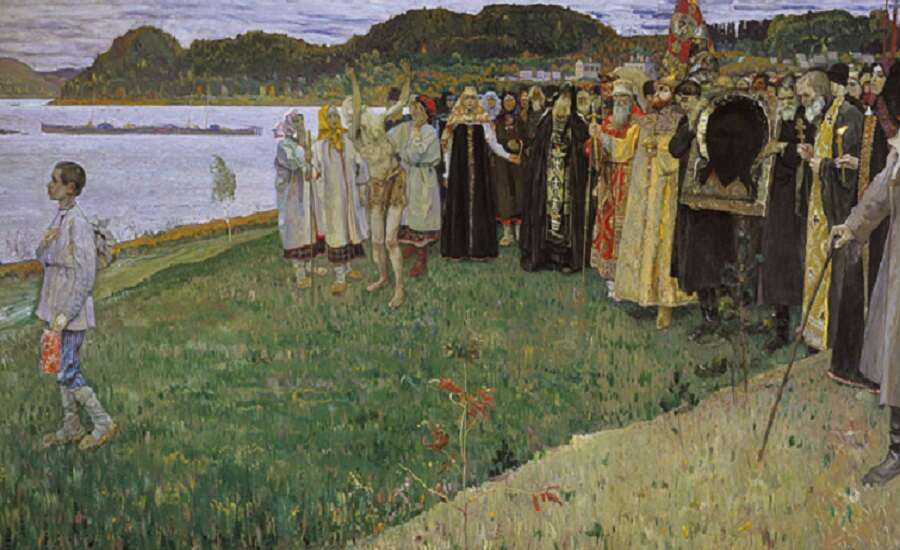
Photo by Михаил Васильевич Нестеров on Wikipedia
The artistic trends accompanying the tumultuous political and social shifts in late 19th – early 20th century Russia are displayed over 12 halls. Visitors can see Andrey Ryabushkin’s portraits of ordinary Russian life, Impressionist scenes by Konstantin Korovin, Post-Impressionist paintings of Igor Grabar (later the director of the Tretyakov Gallery), Mikhail Nesterov’s mythical portraits and religious scenes, sculptures by Anna Golubkina (Russia’s first eminent female sculptor), masterful genre-spanning paintings of Valentin Serov and Zinaida Serebryakova, and the work of Viktor Borisov-Musatov and Mikhail Vrubel (the founders of Russian Symbolism).
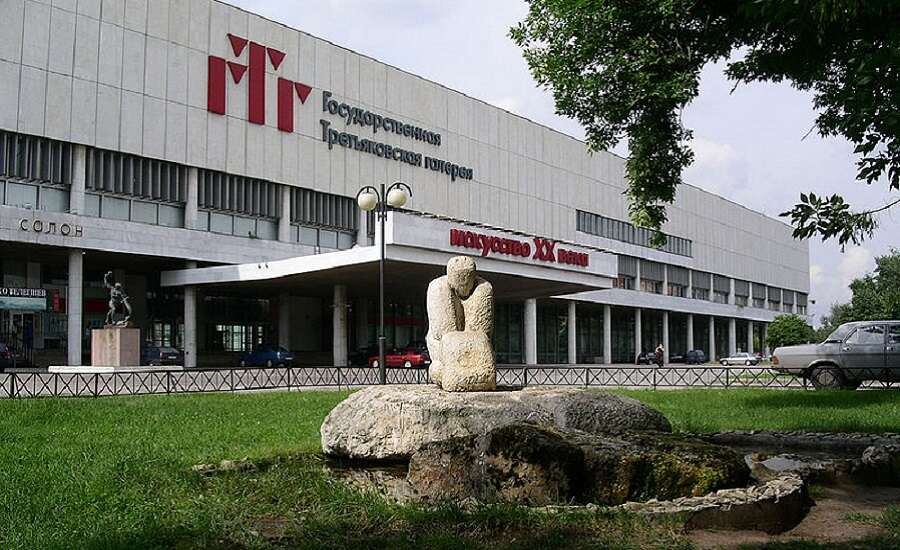
Photo by Yuriy Lapitskiy on Wikipedia
The New Tretyakov Gallery occupies a huge pavilion at Krymsky Val on the Moskva riverbank, and houses Russia’s most complete exhibition of national art from the 20th century to the present day.
11 halls of the exposition feature painting and sculpture by leading Avant Garde artists working over these two decades. Some pieces were originally present in the Tretyakov Gallery’s main collection in the 1920s before being suppressed from the 1930s onwards. The collection includes work by household names such as Natalia Goncharova, Sergei Konenkov (known as ‘the Russian Rodin’), Vladimir Tatlin, Marc Chagall, Kazimir Malevich, Wassily Kandinsky, Kuzma Petrov-Vodkin, Lyubov Popova, and Alexander Rodchenko (one of the founders of Russian Constructivism). Works by these artists are some of the most valuable in the Tretyakov Gallery.
This section of 15 halls chronicles the development of artistic trends over 7 decades of Soviet rule. It includes many Socialist Realist paintings including those by Alexander Deneyka, Alexander Samokhvalov, Boris Johanson and Izaak Brodsky (considered the founder of Socialist Realism in art and the first painter to receive the Order of Lenin), cityscapes by Yuri Pimenov and rural landscapes of Tatyana Yablonskaya, and work by the ‘Queen of Soviet Sculptors’ Vera Mukhina (famous for her Worker and Kolkhoz Woman, the logo of Mosfilm). The later exhibition displays art from Khrushchev’s Thaw onwards, a period which allowed for creative development and experimentation even within Socialist Realism. Unofficial genres of this time included the reappearance of Abstract art, seen in the work of Yuri Zlotnikov, and the emergence of Nonconformist art in the work of Oskar Rabin and members of his circle.
3 halls of painting, sculpture, installation and photography showcase the key unofficial and underground artistic movements of the last decades of the Soviet Union, which included Avant Garde, Soviet Nonconformism and Moscow Conceptualism. The exhibition contains the work of conceptual artist Ilya Kabakov, Alexander Kosolapov and Erik Bulatov’s subverting of ideological images and typography, sculptures and installations of historical artefacts by Boris Orlov, and the paintings of Viktor Pivovarov which simultaneously express criticism and nostalgia for the USSR.
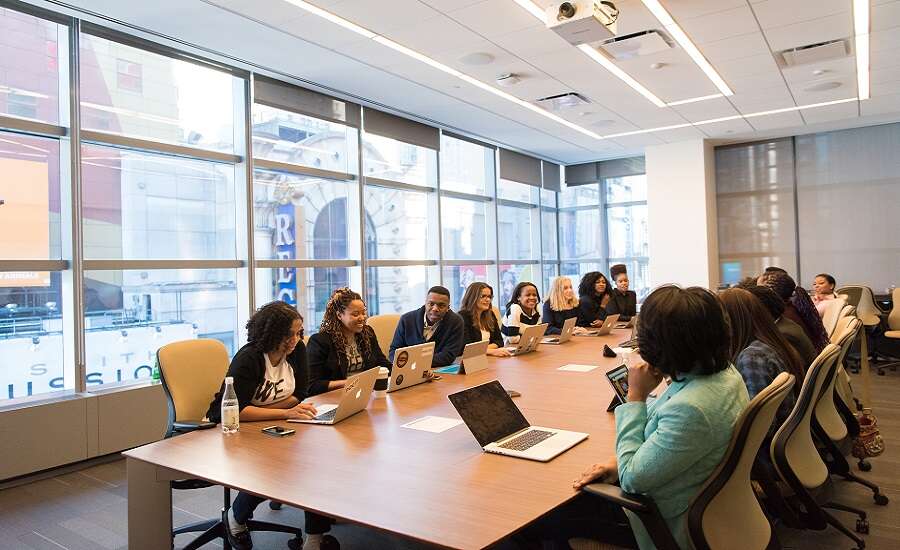
Photo by Christina @ wocintechchat.com on Unsplash
Aside from gallery activities, the main branches of the Tretyakov Gallery host lectures, concerts, theatre productions, workshops and conferences. The Engineer Building on Lavrushinsky Lane houses a cinema with daily film screenings.
Join us on Facebook
We invite you to become a fan of our company on Facebook and read Russian news and travel stories. To become a fan, click here.
Join our own Russian Travel, Culture and Literature Club on Facebook. The club was created to be a place for everyone with an interest in Russia to get to know each other and share experiences, stories, pictures and advice. To join our club, please follow this link.